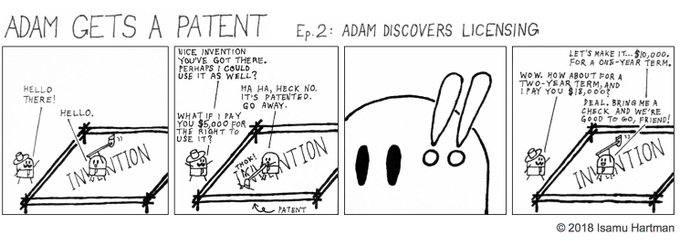Back in January and February of 2018, I spent some time creating two four-panel comics about the process of 1) obtaining patent protection, and 2) monetizing those patent rights by licensing them. I drew the comics to serve as an illustration of concepts that I often find myself explaining to others in the course of my work.
I've already shared these comics through Twitter and Facebook (click on either of link to see more of the creative process!). However, I thought I'd share them with my blog's readership as well. Please enjoy! I'm really hoping to reignite this project at some point in the future and create more episodes.
(Click on the images below to enlarge)
- Isamu Hartman
I've already shared these comics through Twitter and Facebook (click on either of link to see more of the creative process!). However, I thought I'd share them with my blog's readership as well. Please enjoy! I'm really hoping to reignite this project at some point in the future and create more episodes.
(Click on the images below to enlarge)
Episode 1:
Episode 2:
- Isamu Hartman


Comments
Post a Comment